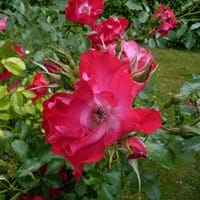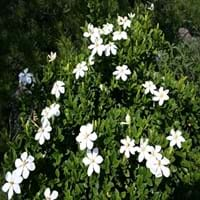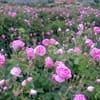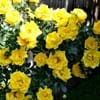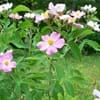Life Span
Perennial
Perennial
Type
Perennial
Broadleaf Evergreen
Origin
Hybrid origin
Eastern Asia
Types
Not Available
Gardenia anapetes, Gardenia candida
Habitat
gardens
Dry Forest, Subtropical climates
USDA Hardiness Zone
5-9
7-10
AHS Heat Zone
9-1
Not Available
Sunset Zone
H1, H2, 6, 7, 8, 9, 12, 13, 14, 15, 16, 17, 18, 19, 20, 21, 22, 23, 24
21,22
Habit
Upright/Erect
Prostrate/Trailing
Flower Color
Pink, Red, Yellow
White, Ivory
Flower Color Modifier
Not Available
Bicolor
Fruit Color
Non Fruiting Plant
Not Available
Leaf Color in Spring
Dark Green
Dark Green
Leaf Color in Summer
Dark Green
Dark Green
Leaf Color in Fall
Dark Green, Green
Dark Green
Leaf Color in Winter
Light Green
Dark Green
Leaf Shape
Pinnate
Elliptic
Plant Season
Spring, Summer, Fall
Spring, Summer, Fall, Winter
Sunlight
Full Sun, Partial Sun
Full Sun, Partial Sun
Growth Rate
Medium
Medium
Type of Soil
Loam, Sand
Clay, Loam, Sand
The pH of Soil
Acidic, Neutral
Acidic, Neutral
Soil Drainage
Well drained
Well drained
Bloom Time
Spring, Late Spring, Early Summer, Summer, Late Summer, Early Fall, Fall
Late Spring, Early Summer, Summer, Late Summer, Early Fall, Fall
Repeat Bloomer
Not Available
Yes
Tolerances
Drought
Shade areas
Where to Plant?
Container, Ground, Pot
Container, Ground, Pot
How to Plant?
Cuttings, Divison, From Rhizomes, Grafting
Seedlings, Stem Planting
Plant Maintenance
Medium
Low
Watering Requirements
Average Water Needs
Do Not over Water, Keep ground moist, Never Over-water, Requires a lot of watering, Requires regular watering, Requires watering in the growing season
In Summer
Lots of watering
Ample Water
In Spring
Moderate
Moderate
In Winter
Average Water
Less Watering
Soil pH
Acidic, Neutral
Acidic, Neutral
Soil Type
Loam, Sand
Clay, Loam, Sand
Soil Drainage Capacity
Well drained
Well drained
Sun Exposure
Full Sun, Partial Sun
Full Sun, Partial Sun
Pruning
Remove damaged leaves, Remove dead branches, Remove dead leaves
Prune in summer, Remove damaged leaves, Remove dead leaves, Remove dead or diseased plant parts
Fertilizers
All-Purpose Liquid Fertilizer
All-Purpose Liquid Fertilizer, Magnesium, Nitrogen, Potassium
Pests and Diseases
Beetles, Black Spot, Caterpillars, Downy mildew, Mosaic viruses, Powdery mildew, Rust, Scale insects, Thripes
Mealybugs, Spider mites, Whiteflies
Plant Tolerance
Drought
Shade areas
Flower Petal Number
Double
Double, Semi-Double
Edible Fruit
Not Available
No
Foliage Texture
Medium
Fine
Foliage Sheen
Glossy
Glossy
Invasive
Not Available
No
Self-Sowing
Not Available
No
Attracts
Birds, Butterflies
Bugs, Insects, Leaf Hoppers
Allergy
Rash
Asthma, breathing problems
Aesthetic Uses
Showy Purposes
Beautification, Landscape Designing, Showy Purposes
Beauty Benefits
Not Available
Good for skin and hair
Environmental Uses
Air purification
Air purification, Food for insects, Prevent Soil Erosion, Shelter for wildlife, Very little waste
Medicinal Uses
Not Available
Abdominal Disease, Abscess, Acid Reflux
Part of Plant Used
Flowers
Fruits, Leaves, Root
Other Uses
Oil is used in perfume, soaps, creams, etc.
Air freshner, Economic Purpose, Employed in herbal medicine, Medicinal oil, Used for its medicinal properties
Used As Indoor Plant
Yes
Yes
Used As Outdoor Plant
Yes
Yes
Garden Design
Container, Cutflower, Feature Plant, Foundation, Mixed Border, Topiary / Bonsai / Espalier
Container, Feature Plant, Foundation, Groundcover, Mixed Border, Tropical
Botanical Name
Rosa kordesii
GARDENIA jasminoides 'Radicans'
Common Name
Max Graf Rose, Weisse Max Graf Rose
Gardenia
In Hindi
Max Graf Rose
बौना गार्डेनिया
In German
Max Graf Rose
Dwarf Gardenia
In French
Max Graf Rose
Gardenia Dwarf
In Spanish
Max Graf Rose
Gardenia enana
In Greek
Max Graf Rose
νάνος Gardenia
In Portuguese
Max Graf Rose
Gardenia Dwarf
In Polish
Max Graf Rose
Dwarf Gardenia
In Latin
Max Graf Rose
Gardenia Dwarf
Phylum
Magnoliophyta
Tracheophyta
Class
Magnoliopsida
Magnoliopsida
Family
Rosaceae
Rubiaceae
Clade
Not Available
Angiosperms, Asterids, Eudicots
Tribe
Not Available
Gardenieae
Subfamily
Not Available
Cinchonoideae
Number of Species
Not Available
Importance of Max Graf Rose and Dwarf Gardenia
Want to have the most appropriate plant for your garden? You might want to know the importance of Max Graf Rose and Dwarf Gardenia. Basically, these two plants vary in many aspects. Compare Max Graf Rose and Dwarf Gardenia as they differ in many characteristics such as their life, care, benefits, facts, etc. Every gardener must at least have the slightest clue about the plants he wants to plant in his garden. Compare their benefits, which differ in many ways like facts and uses. The medicinal use of Max Graf Rose is Not Available whereas of Dwarf Gardenia is Abdominal Disease, Abscess and Acid Reflux. Max Graf Rose has beauty benefits as follows: Not Available while Dwarf Gardenia has beauty benefits as follows: Not Available.
Compare Facts of Max Graf Rose vs Dwarf Gardenia
How to choose the best garden plant for your garden depending upon its facts? Here garden plant comparison will help you to solve this query. Compare the facts of Max Graf Rose vs Dwarf Gardenia and know which one to choose. As garden plants have benefits and other uses, allergy is also a major drawback of plants for some people. Allergic reactions of Max Graf Rose are Rash whereas of Dwarf Gardenia have Asthma and breathing problems respectively. Having a fruit bearing plant in your garden can be a plus point of your garden. Max Graf Rose has no showy fruits and Dwarf Gardenia has no showy fruits. Also Max Graf Rose is not flowering and Dwarf Gardenia is not flowering . You can compare Max Graf Rose and Dwarf Gardenia facts and facts of other plants too.
